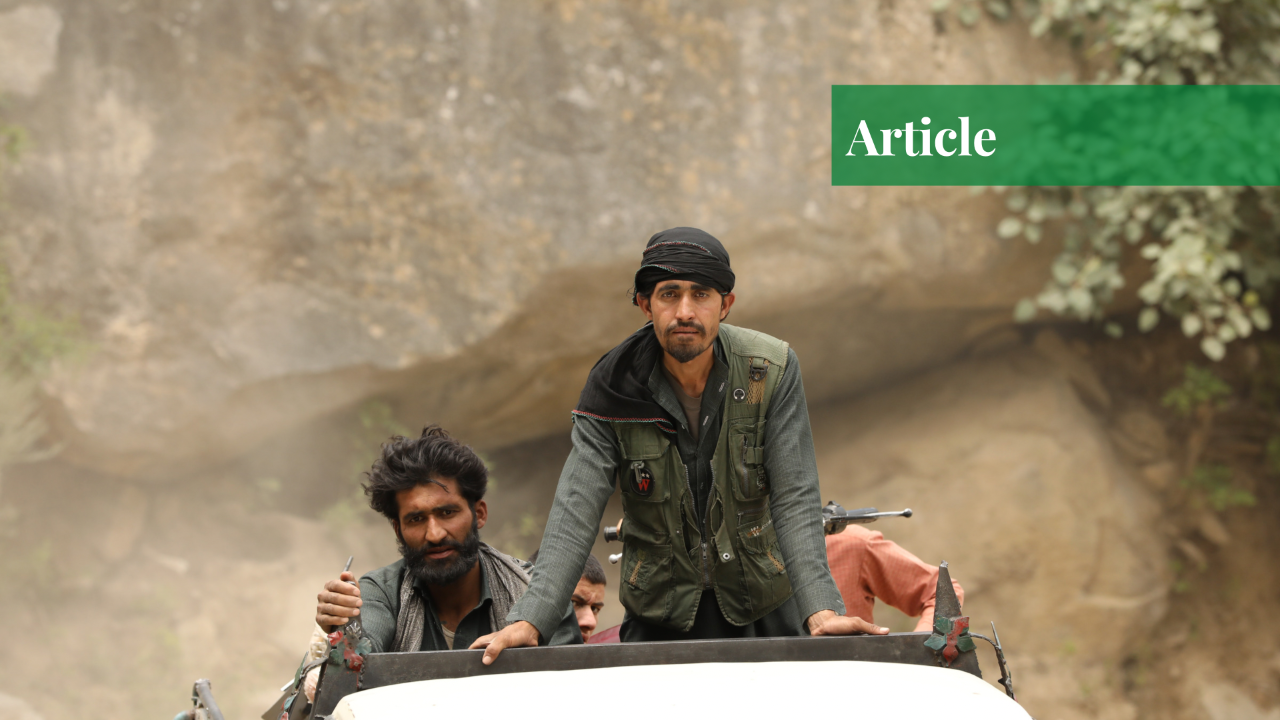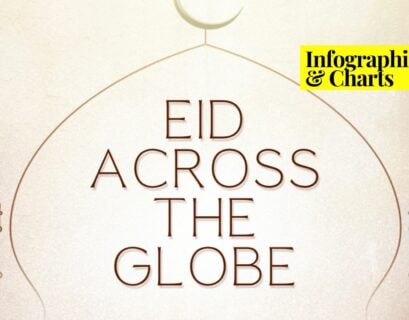Mr. Uzair Bin Farid completed his undergraduate degree from Quaid-e-Azam University before pursuing his Master's in Economics from IBA Karachi. He has a keen interest in IR, global politics, and strategic issues.
Reclaiming Afghanistan
The rapidity with which the Western alliance dislodged the Taliban regime in 2001 pales in comparison to the rapidity with which the Taliban retook the country and came to power as soon as the Americans left. The Afghan government was left to fend for itself on the back of an army trained and equipped by the Americans.
What happened on the 15th of August, 2021 will baffle the historians of military strategy and warfare for many centuries to come. The way in which the Americans evacuated their embassy personnel and other staff from Kabul seemed like a replay of the fall of Saigon, or so the experts say.
In this war of imperialism and Islamic resistance, who won and who lost is left for the better conscience of the reader. There was, however, a third party to the conflict which was supposed to defend itself against the Taliban as soon as the Americans left: the Afghan government and the Afghan National Army (ANA).
Tribal Islam and Settled Islam
Both the Taliban and the Afghan Government are Muslims representing their own versions of Islam. Taliban is a manifestation of Tribal Islam and the Afghan government with its support base in the urban centers represented the Settled Islam. The distinction between Tribal Islam and Settled Islam was made by Akbar Ahmad in his landmark study of Europe: “Journey into Europe: Islam, Immigration and Identity.”
He was referring to the Umayyad dynasty of Spain or Andalusia, as it is commonly known, established by the runaway caliph Abd-ur-Rehman, the first. The dynasty that he established would come to be remembered in the annals of history as one of the most enlightened periods of human community living.
It was popularized by the term la-convivencia. Cordoba, the capital of Muslim Spain, would become the melting pot of disparate faiths, languages, cultures, and identities. Jews, Christians, Muslims, and Atheists would live together to provide the intellectual foundations for the dawn of Renaissance and Enlightenment.
Asabiyyah
This form of life, however, came with its fair share of drawbacks. Getting used to the sedentary city life with its baths and taverns, where Wallada would accost her lover with her not-so-modest poetry, resulted in the sapping of energy that characterized the initial triumph of Berber North African tribes over the inhabitants of the Iberian Peninsula.
A static lifestyle and much peace resulted in an effete populace with weak links to social solidarity. In contrast, tribal peoples from the North African region still practiced Asabiyyah or social cohesion and solidarity. Asabiyyah, as defined by Ibn Khaldun, is a feature of tribal societies. It emphasizes brotherhood, social responsibility, and social cohesion, in its strictest sense.
Their tough lifestyle rooted in asabiyyah coupled with “Simple Islam” made them an indomitable force. Their unadulterated faith in the temporary nature of this life made them the ultimate fighting force. These became the defining features of Tribal Islam; simple but unyielding.
On the other hand, Settled Islam of Andalusian variety was characterized by the philosophic and poetic quests of its cosmopolitan populace. It could not present a united front against the tribal forces from the south. The essential element of asabiyyah or social cohesion was starkly absent. Their living philosophy of tolerance, peace, interfaith harmony, and pursuit of arts and sciences was not a match for the raw military force of the Berber tribes.
Thus, when Tribal Islam from the south came in contact with the Settled Islam, the latter was slow to respond and could not resist, and so the Umayyads were replaced by the Almoravids in the eleventh century who, in turn, were replaced by the Almohads in the subsequent century.
The Taliban and Tribal Islam
The distinction between Tribal Islam and Settled Islam is essential in understanding the conflict between the Taliban and the Afghan State. American forces kept the advance of the Taliban in check with their mighty military machine and state-of-the-art defense equipment. The ANA also kept the aura of a fighting force intact, but, no sooner had the Americans started to pull back, ANA started to collapse against the vanguard of the approaching Taliban.
After spending upwards of US$100 billion on training and equipping the ANA, the latter could not put up a resistance worth the name. As of this writing, the re-conquest of Afghanistan at the hands of the Taliban is complete. Afghanistan is back to square one. How and when the Taliban came to power will be argued about. Governance failures, lack of organization in the military, and lack of supplies at the forward operating bases all contributed to the problem.
There is, however, one very fundamental reason which in light of the current framework made the physical victory so swift, and that has to do with the dichotomy of Tribal Islam and Settled Islam. Taliban are a rag-tag group of religious students. They come from religious schools which are in no short supply in tribal areas of western Pakistan and eastern Afghanistan.
They are not only trained in the strict literal interpretation of Islam, but they also grow up in tribal societies with their strict emphasis on tribal codes of honor, hospitality, revenge, and social cohesion or Khaldunian asabiyyah. Their Islam thus becomes a blend of fundamentalist and tribal features. They would eat chapatis (bread) without anything to soak it in except water.
As soon as they went to a religious school, they had to get used to the reality of eating raw bread. This is how religious schools sustain themselves in times of limited funds. Thus, these students are exposed to a hard lifestyle from a very early age. This, coupled with their traditional tribal culture, makes them very tough in temperament.
This is the reason that Taliban fighters have been described time and again, as very “tenacious” fighters who do not let go. On top of all this, when these students see their fellow countrymen and co-religionists being killed at the hands of an “infidel occupying army,” they are liable to be motivated to wage the Holy War or Jihad.
These reasons served to entrench a very strict belief in the righteousness of their cause which supplemented their physical toughness. They thus came to embody the same Tribal Islam which triumphed over the Settled Islam of effete Andalusians. Only in this case, the Settled Islam was represented by the ANA and the government in Kabul.
External Forces and Internal Divisions
Taliban never accepted the Afghan government in Kabul as legitimate. For them, it was “flown in” by the infidels. Their fundamentalist ideology rooted in the literal interpretation of the Quran left little room for discourse. It suited their military objectives. ANA, on the other, was a motley crew mostly composed of poor Afghans who needed a job.
As soon as they saw the internal divisions of the Kabul government, their belief in their invincibility would wane. Moreover, towards the end of the American occupation, it was increasingly clear that the Ghani government with its loud-mouthed executives was increasingly out of touch with the reality. As soon as the first soldier deserted, the war was lost.
ANA was trained to fight for a modern government representing a mass of urban-dwellers. This represented the Settled Islam with its emphasis on passivity, tolerance, and a lifestyle more attuned to intellectual rigor. Taliban, on the other hand, represent Tribal Islam in its most stark form. Physical endurance and a firm belief combined to make them a deadly force.
As soon as Tribal Islam came in contact with Settled Islam, Tribal Islam prevailed. In this modern contest of Tribal Islam and Settled Islam, one is amazed at how faith, belief, ideology, and primordial notions of tribal identity can still fare at par with modern high-tech military machines operated from the stratosphere or remote bases.
For what it’s worth, it helps to state that hasty decisions based on the vanity of power result in disasters. Both America and the now-defunct Afghan Government missed the chance of talking to the Taliban back in 2002-03 when the group was ready to talk and was even proactively searching for opportunities to talk.
If you want to submit your articles and/or research papers, please check the Submissions page.
The views and opinions expressed in this article/paper are the author’s own and do not necessarily reflect the editorial position of Paradigm Shift.



















